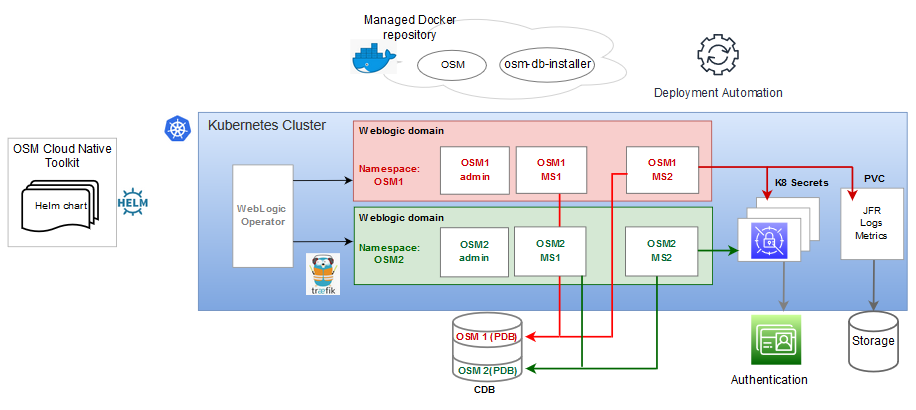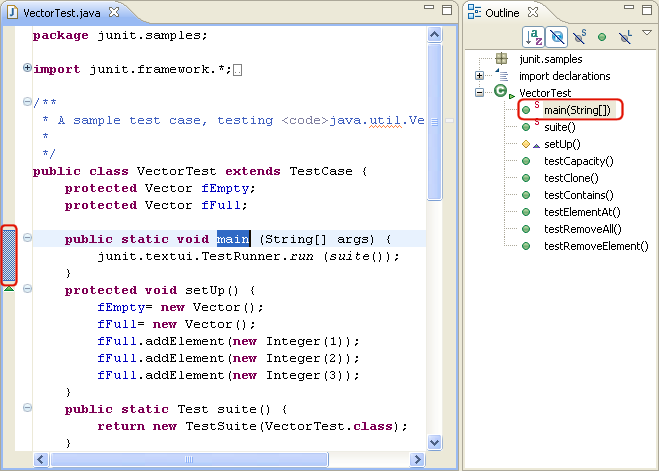For decades, Java has been the backbone of enterprise software development, powering everything from complex financial systems to large-scale e-commerce platforms. At the heart of this ecosystem lies Java Platform, Enterprise Edition, now known as Jakarta EE. While frameworks like Spring Boot have gained immense popularity, Jakarta EE remains a powerful, standardized, and robust platform for building scalable, secure, and transactional Java backend applications. Its evolution from the Oracle-managed Java EE to the open, community-driven Jakarta EE under the Eclipse Foundation has breathed new life into the platform, ensuring it keeps pace with modern development trends like microservices and cloud-native deployment.
This comprehensive guide will take you on a deep dive into the world of Jakarta EE. We will explore its core concepts, from creating RESTful APIs to managing data persistence. We will provide practical, educational Java code examples, discuss advanced techniques, and cover best practices for building high-performance enterprise applications. Whether you are new to Java development or an experienced programmer looking to understand the modern state of enterprise Java, this article will provide you with the foundational knowledge to succeed with Jakarta EE.
The Core Pillars of Jakarta EE: APIs, Dependency Injection, and Persistence
Jakarta EE is not a single framework but a collection of standardized specifications. An application server (like WildFly, Payara, or Open Liberty) provides the implementation for these specifications. This approach promotes portability and prevents vendor lock-in. Let’s explore the three most fundamental pillars you’ll encounter in any Jakarta EE application.
1. Jakarta RESTful Web Services (JAX-RS): Building Your API Layer
In modern Java web development, creating REST APIs is a primary task. Jakarta RESTful Web Services (formerly JAX-RS) provides a simple, annotation-driven API for building these services. You define a resource class and use annotations to map HTTP methods (GET, POST, PUT, DELETE) to your Java methods.
Here’s a practical example of a simple `ProductResource` that exposes endpoints to manage a list of products. This demonstrates a basic Java REST API implementation.
package com.example.api;
import jakarta.ws.rs.GET;
import jakarta.ws.rs.Path;
import jakarta.ws.rs.PathParam;
import jakarta.ws.rs.Produces;
import jakarta.ws.rs.core.MediaType;
import jakarta.ws.rs.core.Response;
import java.util.List;
import java.util.Map;
import java.util.concurrent.ConcurrentHashMap;
// Defines the base path for this resource
@Path("/products")
public class ProductResource {
// A simple in-memory data store for demonstration
private static final Map<String, String> products = new ConcurrentHashMap<>();
static {
products.put("p123", "Laptop");
products.put("p456", "Keyboard");
}
// Maps to HTTP GET requests at /products
@GET
@Produces(MediaType.APPLICATION_JSON)
public List<String> getAllProducts() {
return List.copyOf(products.values());
}
// Maps to HTTP GET requests like /products/p123
@GET
@Path("/{id}")
@Produces(MediaType.APPLICATION_JSON)
public Response getProductById(@PathParam("id") String id) {
String product = products.get(id);
if (product != null) {
return Response.ok(product).build();
} else {
return Response.status(Response.Status.NOT_FOUND).build();
}
}
}2. Contexts and Dependency Injection (CDI): The Glue of the Application
How do different components of your application, like a resource class and a service that talks to the database, find each other? Jakarta Contexts and Dependency Injection (CDI) is the answer. It’s the standard dependency injection framework in Jakarta EE. By using annotations like @Inject and scope annotations (e.g., @ApplicationScoped, @RequestScoped), you let the container manage the lifecycle and wiring of your components. This promotes loose coupling and makes your code easier to test and maintain, a core principle of Clean Code Java.
3. Jakarta Persistence (JPA): Standardizing Data Access
Nearly every enterprise application needs to interact with a database. Jakarta Persistence (JPA) is the standard specification for Object-Relational Mapping (ORM) in Java. It allows you to map your Java objects (Entities) to database tables. You don’t write SQL by hand; instead, you interact with an EntityManager to perform create, read, update, and delete (CRUD) operations. Hibernate is the most popular implementation of the JPA specification, but because JPA is a standard, you can switch to another provider like EclipseLink with minimal code changes.
Implementing a Complete Service Layer with JPA and CDI

Let’s combine the concepts of CDI and JPA to build a more realistic service. First, we need a JPA Entity. This is a plain Java object (POJO) annotated to map to a database table.
Defining a JPA Entity
Here is a `Product` entity that could be mapped to a `products` table in a relational database. Note the use of standard JPA annotations like @Entity, @Id, and @GeneratedValue.
package com.example.model;
import jakarta.persistence.Entity;
import jakarta.persistence.GeneratedValue;
import jakarta.persistence.GenerationType;
import jakarta.persistence.Id;
import jakarta.persistence.Table;
import java.util.Objects;
@Entity
@Table(name = "products")
public class Product {
@Id
@GeneratedValue(strategy = GenerationType.IDENTITY)
private Long id;
private String name;
private double price;
// Constructors, getters, setters, equals, and hashCode...
public Long getId() {
return id;
}
public void setId(Long id) {
this.id = id;
}
public String getName() {
return name;
}
public void setName(String name) {
this.name = name;
}
public double getPrice() {
return price;
}
public void setPrice(double price) {
this.price = price;
}
@Override
public boolean equals(Object o) {
if (this == o) return true;
if (o == null || getClass() != o.getClass()) return false;
Product product = (Product) o;
return Objects.equals(id, product.id);
}
@Override
public int hashCode() {
return Objects.hash(id);
}
}Creating a CDI Service Bean with JPA
Next, we create a service class that handles the business logic for products. This class will be a CDI bean (@ApplicationScoped) and will use @Inject to get an instance of JPA’s EntityManager. The @Transactional annotation ensures that each method runs within a proper database transaction.
package com.example.service;
import com.example.model.Product;
import jakarta.enterprise.context.ApplicationScoped;
import jakarta.inject.Inject;
import jakarta.persistence.EntityManager;
import jakarta.transaction.Transactional;
import java.util.List;
@ApplicationScoped // Marks this as a CDI bean with a single instance for the application
public class ProductService {
@Inject // Injects the container-managed EntityManager
private EntityManager em;
@Transactional // Manages database transactions automatically
public Product createProduct(Product product) {
em.persist(product);
return product;
}
public Product findProductById(Long id) {
return em.find(Product.class, id);
}
public List<Product> findAllProducts() {
// Using Jakarta Persistence Query Language (JPQL)
return em.createQuery("SELECT p FROM Product p", Product.class).getResultList();
}
}Now, you can inject this `ProductService` into your `ProductResource` from the first example, creating a clean, layered Java architecture. This separation of concerns is a fundamental Java design pattern for building maintainable systems.
Advanced Techniques and Modern Java Integration
Jakarta EE is not stuck in the past. It integrates seamlessly with modern Java features and architectural patterns, making it a great choice for building Java microservices and cloud-native applications.
Leveraging Modern Java Features: Streams and Lambdas
Since Java 8, functional programming constructs like Java Streams and Lambda expressions have become central to Java programming. You can and should use these features within your Jakarta EE components to write more concise and expressive code. For example, you can use the Stream API to process data retrieved via JPA.
Here’s an example method in our `ProductService` that finds all products above a certain price and returns their names, demonstrating Functional Java in an enterprise context.
package com.example.service;
import com.example.model.Product;
import jakarta.enterprise.context.ApplicationScoped;
import jakarta.inject.Inject;
import jakarta.persistence.EntityManager;
import java.util.List;
import java.util.stream.Collectors;
@ApplicationScoped
public class ProductService {
@Inject
private EntityManager em;
// ... other methods from previous example
/**
* Finds products above a certain price and returns a list of their names.
* This demonstrates using Java Streams with JPA results.
* This method assumes it's called within a transactional context.
* @param minPrice The minimum price to filter by.
* @return A list of product names.
*/
public List<String> getProductNamesAbovePrice(double minPrice) {
List<Product> allProducts = em.createQuery("SELECT p FROM Product p", Product.class).getResultList();
// Using Java Streams API for filtering and mapping
return allProducts.stream() // 1. Create a stream from the list
.filter(p -> p.getPrice() > minPrice) // 2. Filter products by price
.map(Product::getName) // 3. Map each Product object to its name
.collect(Collectors.toList()); // 4. Collect the results into a new list
}
}Asynchronous Operations and Messaging
For long-running tasks or communication between microservices, asynchronous processing is key. Jakarta EE supports this through annotations like @Asynchronous on CDI or EJB methods, allowing a method to execute in a separate thread without blocking the caller. For more robust, decoupled communication, Jakarta Messaging (JMS) provides a standard API for working with message brokers like ActiveMQ or RabbitMQ. This is essential for building resilient and scalable Java microservices architectures.

Securing Your Application with Jakarta Security
Security is non-negotiable. Jakarta Security is a modern, self-contained specification designed to simplify application security. It provides streamlined APIs for authentication and authorization, integrating well with modern mechanisms like OAuth2 and JWT (JSON Web Tokens). You can define security constraints declaratively with annotations, making it easier to protect your Java REST APIs and other web resources.
Best Practices, Tooling, and Deployment
Writing the code is only part of the story. Building a successful enterprise application requires adherence to best practices and a solid understanding of the surrounding ecosystem.
Development and Build Tools
Most Jakarta EE projects are built using Java Maven or Java Gradle. These Java build tools manage dependencies, compile code, run tests, and package the application into a standard WAR (Web Application Archive) or EAR (Enterprise Application Archive) file for deployment. Defining your Jakarta EE API dependencies (e.g., `jakarta.platform:jakarta.jakartaee-api`) with a `provided` scope is a common practice, as the application server will provide the implementation at runtime.
Testing Strategies
A robust testing strategy is crucial.
- Unit Testing: Use frameworks like JUnit and Mockito to test individual classes (like a service) in isolation. You can mock dependencies like the
EntityManagerto focus solely on the business logic. - Integration Testing: Tools like Arquillian allow you to run tests inside a real or embedded application server. This is perfect for testing the interaction between your components (e.g., a JAX-RS endpoint calling a CDI bean that uses JPA) in a realistic environment.

Deployment and Cloud-Native Java
Traditionally, Jakarta EE applications are deployed to full-fledged application servers. However, the ecosystem has evolved for the cloud. Many modern runtimes are lightweight and optimized for containerization. Using Docker Java to package your application and its server into a container image is now standard practice. These containers can then be managed by orchestration platforms like Kubernetes, enabling scalable and resilient Java deployment in any cloud environment (AWS Java, Azure Java, Google Cloud Java) and facilitating modern Java DevOps and CI/CD Java pipelines.
Java Performance and Optimization
For high-performance systems, consider JVM tuning, optimizing garbage collection, and writing efficient database queries. Use profiling tools to identify bottlenecks. Jakarta EE’s standardized nature means that performance best practices related to JPA (e.g., avoiding N+1 select problems) and concurrency are well-documented and widely applicable.
Conclusion: The Enduring Power of Standardized Enterprise Java
Jakarta EE represents the evolution of a battle-tested, standardized platform for enterprise Java development. It provides a comprehensive suite of specifications for building everything from monolithic applications to distributed Java microservices. By leveraging its powerful APIs for REST services (JAX-RS), dependency injection (CDI), and data persistence (JPA), developers can build robust, secure, and scalable Java backend systems.
The move to a community-driven model under the Eclipse Foundation has accelerated its innovation, ensuring it remains relevant in a cloud-native world. By combining the stability of standards with the power of modern Java features like streams and lambdas, Jakarta EE offers a compelling choice for your next enterprise project. We encourage you to explore the latest Jakarta EE release, experiment with a modern application server, and discover the productivity and power of a standards-based approach to Java enterprise development.
